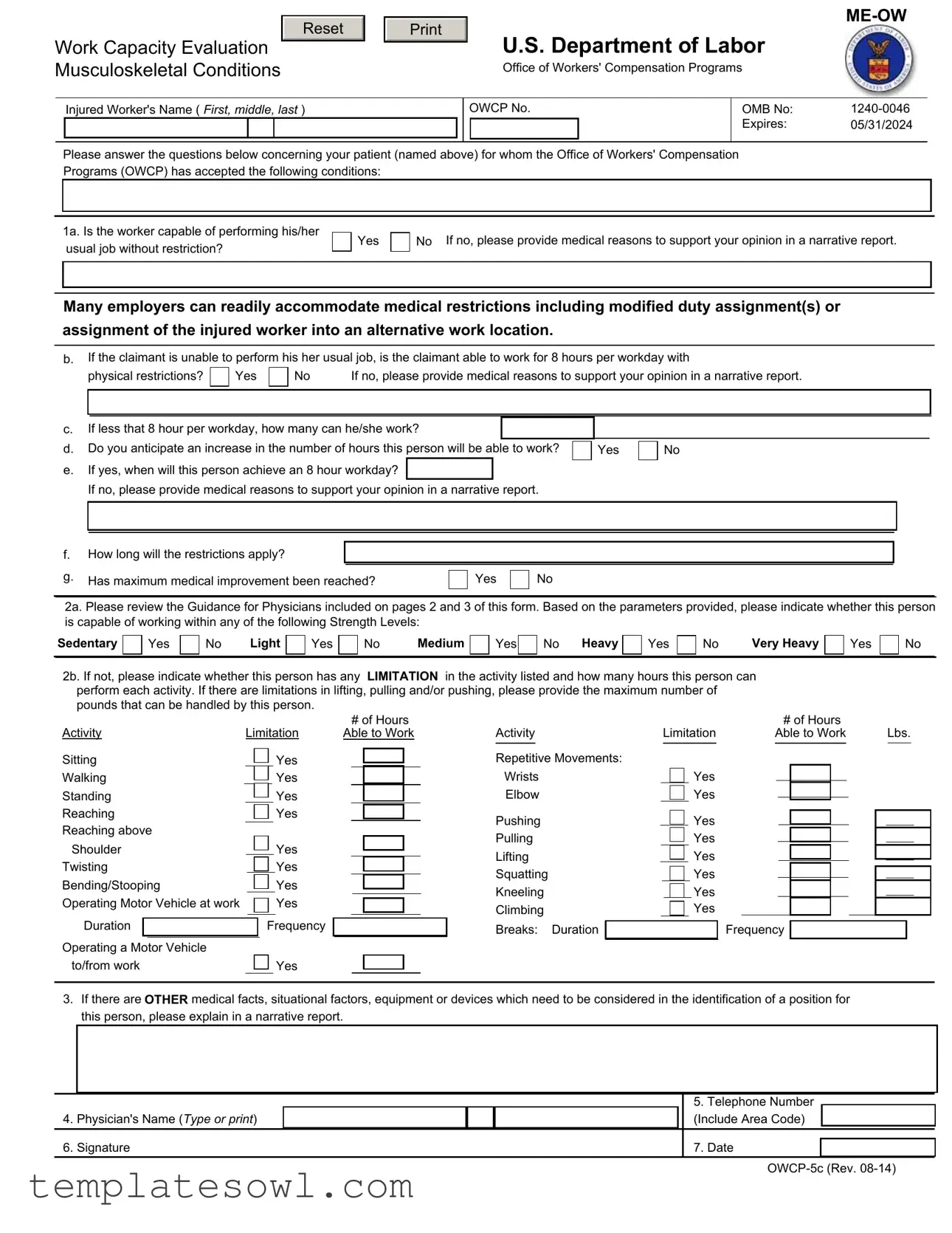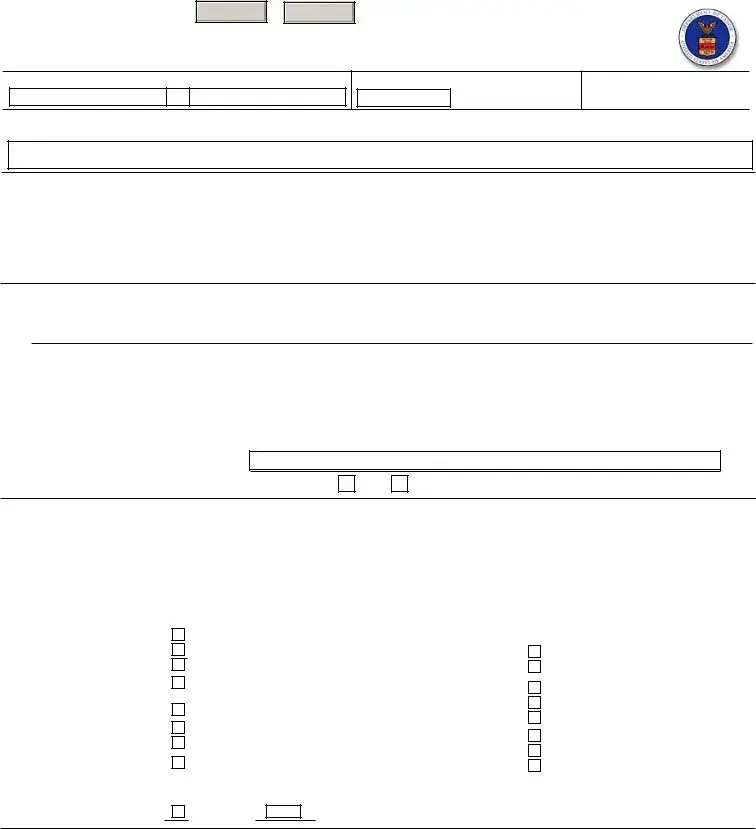Physical Demand Definitions for the OWCP (continued)
PRESENCE AND/OR FREQUENCY OF OTHER PHYSICAL DEMANDS
The following codes and definitions indicate the absence or presence and frequency of other Physical Demand components requested on the OWCP-5b and OWCP-5c.
Code |
Frequency |
Definition |
Max # hrs./8-hr. day |
N |
Not Present |
Activity/condition does not exist. |
0 |
O |
Occasionally |
Activity/condition exists up to 1/3 of the time. |
2 hrs. 40 min. |
F |
Frequently |
Activity/condition exists from 1/3 to 2/3 of the time. |
5 hrs. 20 min. |
C |
Constantly |
Activity/condition exists 2/3 or more of the time. |
8 |
2. REACHING
Forward flexion and/or abduction of the hand(s) and arm(s); generally, within a 0◦ - 90◦ range of motion from the shoulder; or extension within a 0◦ - 50 ◦ range of motion from the shoulder.
3. REACHING ABOVE THE SHOULDER
Forward flexion and/or abduction of the hand(s) and arm(s); generally at greater than 90◦ from the shoulder.
4. TWISTING
Turning, twisting, contorting, or flexing the torso in any direction towards the right or left.
5. BENDING/STOOPING
Bending body downward and forward by bending spine at the waist requiring full use of the lower extremities and back muscles.
6. OPERATING A MOTOR VEHICLE AT WORK
Driving any vehicle during the performance of one's duties.
7. REPETITIVE MOVEMENTS OF ELBOWS (HANDLING)
Seizing, holding, grasping, turning, or otherwise working with hand or hands using the whole arm.
8. REPETITIVE MOVEMENTS OF WRISTS (FINGERING)
Picking, pinching, or otherwise working primarily with fingers and wrists rather than the whole arm as in handling.
9. SQUATTING (CROUCHING)
Bending body downward and forward by bending legs and spine.
10. KNEELING
Bending legs at knees to come to rest on knee or knees.
11. CLIMBING
Ascending or descending ladders, stair, scaffolding, ramps, poles, and the like, using feet and legs or hands and arms. Body agility is emphasized.


